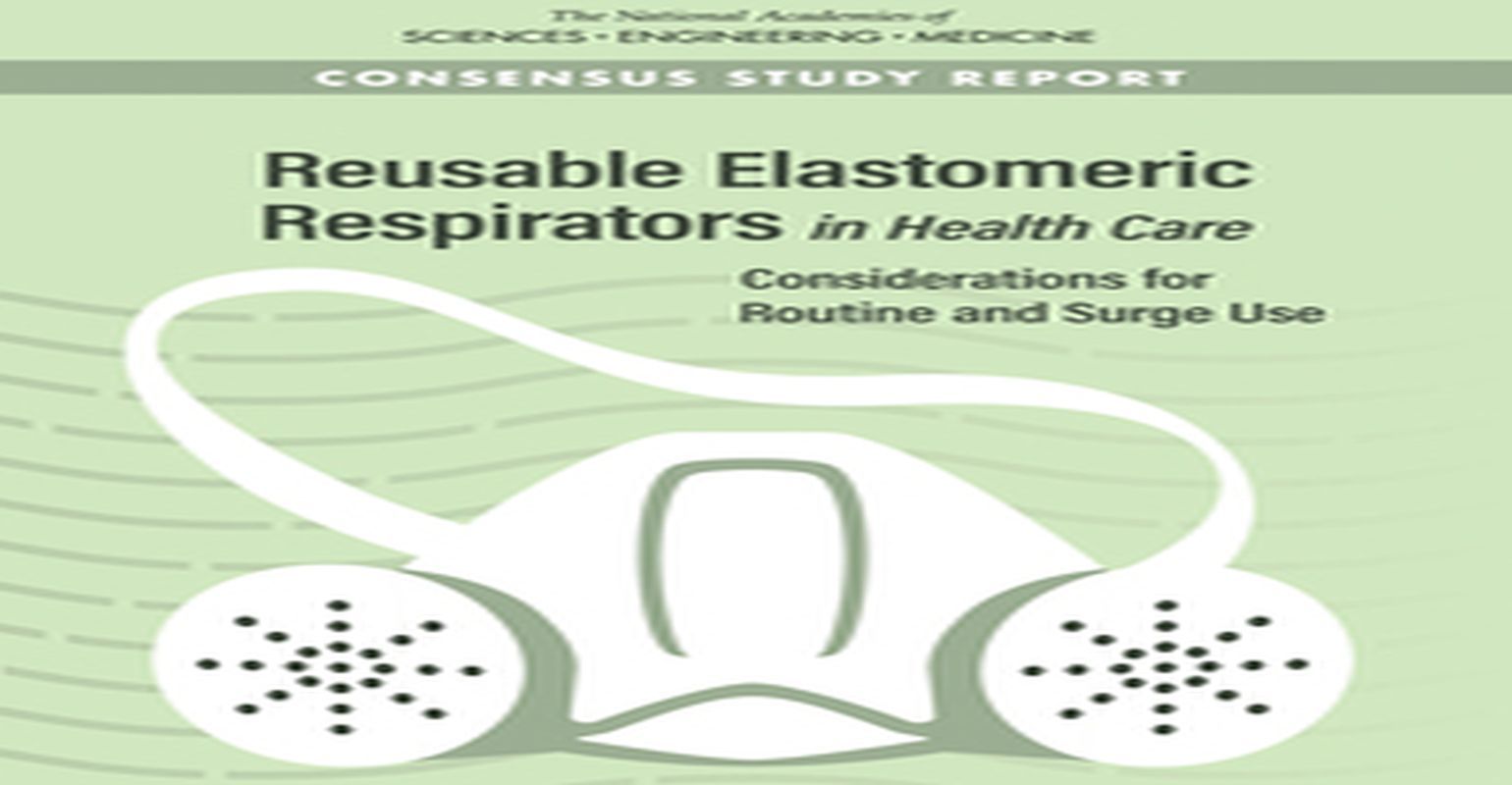Reusable Respirators are an Effective Option for Protecting Healthcare Personnel

Half-facepiece reusable elastomeric respirators are an effective and viable option for protecting healthcare workers from exposure to airborne transmissible contaminants or infectious agents -- for example, influenza virus -- during day-to-day work or with a sudden or rapid influx of patients, such as during a public health emergency, says a new report from the National Academies of Sciences, Engineering and Medicine. Implementation challenges including storage, disinfection, and maintenance; training and education; user comfort and tolerability; and supply logistics and emergency stockpiling need to be addressed.
Respirators are one component of a range of administrative, engineering, and environmental hazard controls and prevention strategies used in healthcare to protect workers from exposure to airborne hazards during patient care and laboratory analysis, and while handling hazardous medication or waste. Reusable respirators (made from elastomeric or flexible rubber-like materials) are the standard respiratory protection device used in many industries, especially for industrial purposes, and their durability and reusability make them desirable for stockpiling in case of emergencies. They are not used widely in healthcare, however. Only two U.S. health institutions were identified by the study committee as using reusable elastomeric respirators either exclusively or primarily. Most health facilities use filtering facepiece respirators, often called N95s, which are disposable after one use or in between seeing patients.
The advantages of routine use of elastomeric respirators include increased familiarity of staff with these respirators and the continued improvement of policies and practices for cleaning, disinfection and maintenance, leading to better preparedness during an emergency or pandemic situation. A smooth transition to surge use would be expedited and enhanced if reusable elastomeric respirators were a part of a healthcare facility's day-to-day respiratory protection program.
Addressing the respiratory needs of healthcare workers across their wide range of settings and jobs -- including, for example, home health caregivers, rural clinic personnel, nursing home staff, and hospital staff -- is an ethical imperative, the report says. It will require the design of innovative reusable respirators and the implementation of robust respiratory protection programs. These should take into account the distinctive characteristics of the healthcare workplace, including responsibilities of caring for multiple patients with varying health conditions; sudden and non-routine need for respiratory protection; and the possibility of needing to address unknown, potentially lethal, and highly transmissible infectious agents.
In addition, urgent action is needed to resolve gaps in knowledge and leadership on transmissibility of airborne contaminants or infectious agents. This includes the lack of standardized processes for the cleaning and disinfection of reusable respirators, the need for consistent guidance and standards by regulatory and policymaking authorities, and the need to establish accountability policies for each facility's respiratory protection program. The committee developed a set of recommendations for the National Institute for Occupational Safety and Health, National Center for Immunization and Respiratory Diseases, professional associations, and accrediting organizations, among others, to spur research; enable effective respiratory protection programs, training, and education; and ensure rapid and seamless implementation.
The study was sponsored by the Centers for Disease Control and Prevention. The National Academies of Sciences, Engineering, and Medicine are private, nonprofit institutions that provide independent, objective analysis and advice to the nation to solve complex problems and inform public policy decisions related to science, technology, and medicine.
Source: National Academies of Sciences, Engineering, and Medicine
Unraveling a Candida auris Outbreak: Infection Control Challenges in a Burn ICU
March 19th 2025A Candida auris outbreak in a burn intensive care unit (BICU) in Illinois has highlighted the persistent challenges of infection control in high-risk health care settings. Despite rigorous containment efforts, this multidrug-resistant fungal pathogen continued to spread, underscoring the need for enhanced prevention strategies, environmental monitoring, and genomic surveillance.
Unmasking Long COVID: Dr Noah Greenspan on Recovery, Research Gaps, and the Future of Treatment
March 18th 2025Dr Noah Greenspan discusses the evolving understanding of long COVID, current treatment strategies, diagnostic challenges, and the critical need for research and awareness in post-viral syndromes.